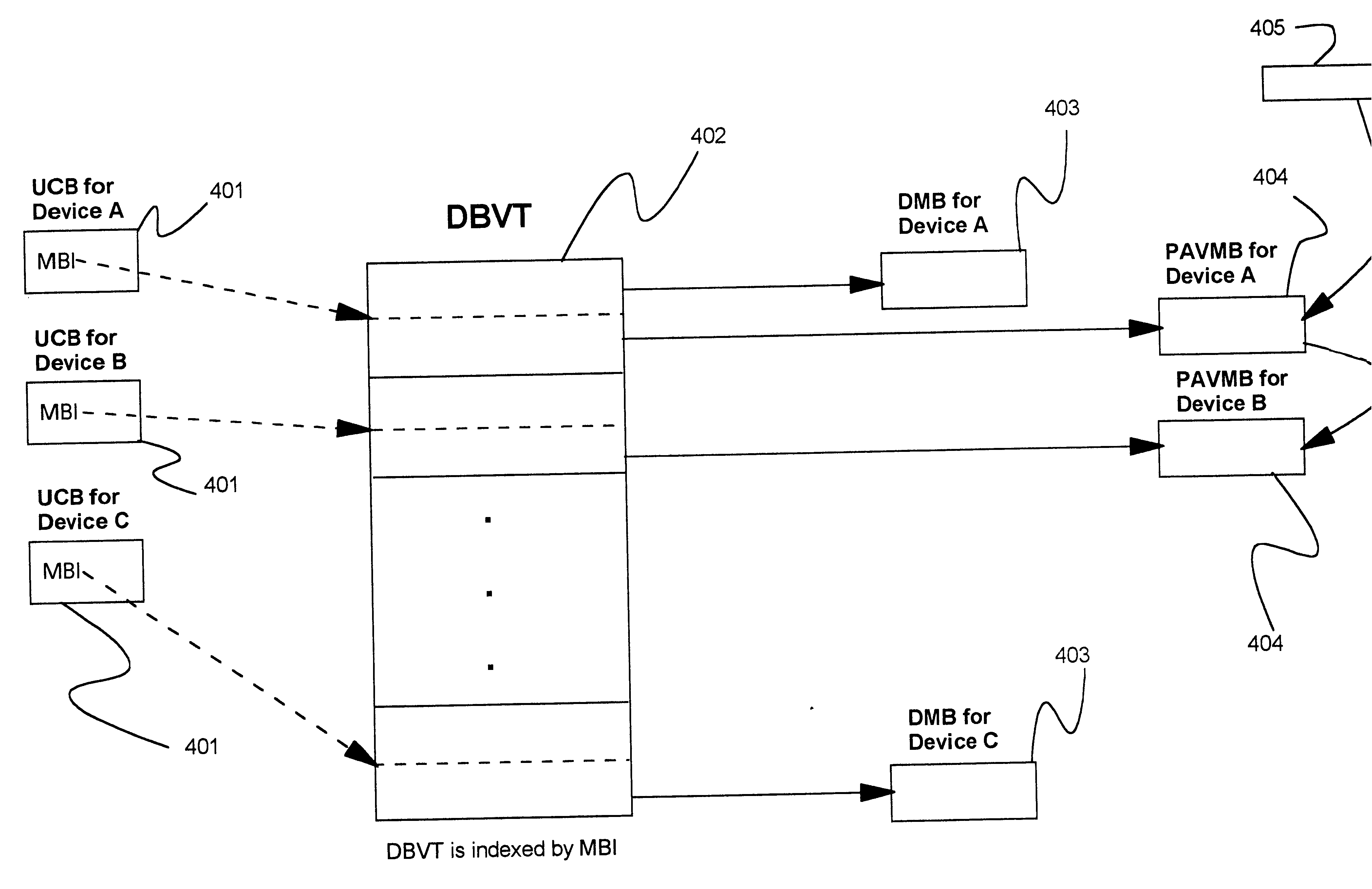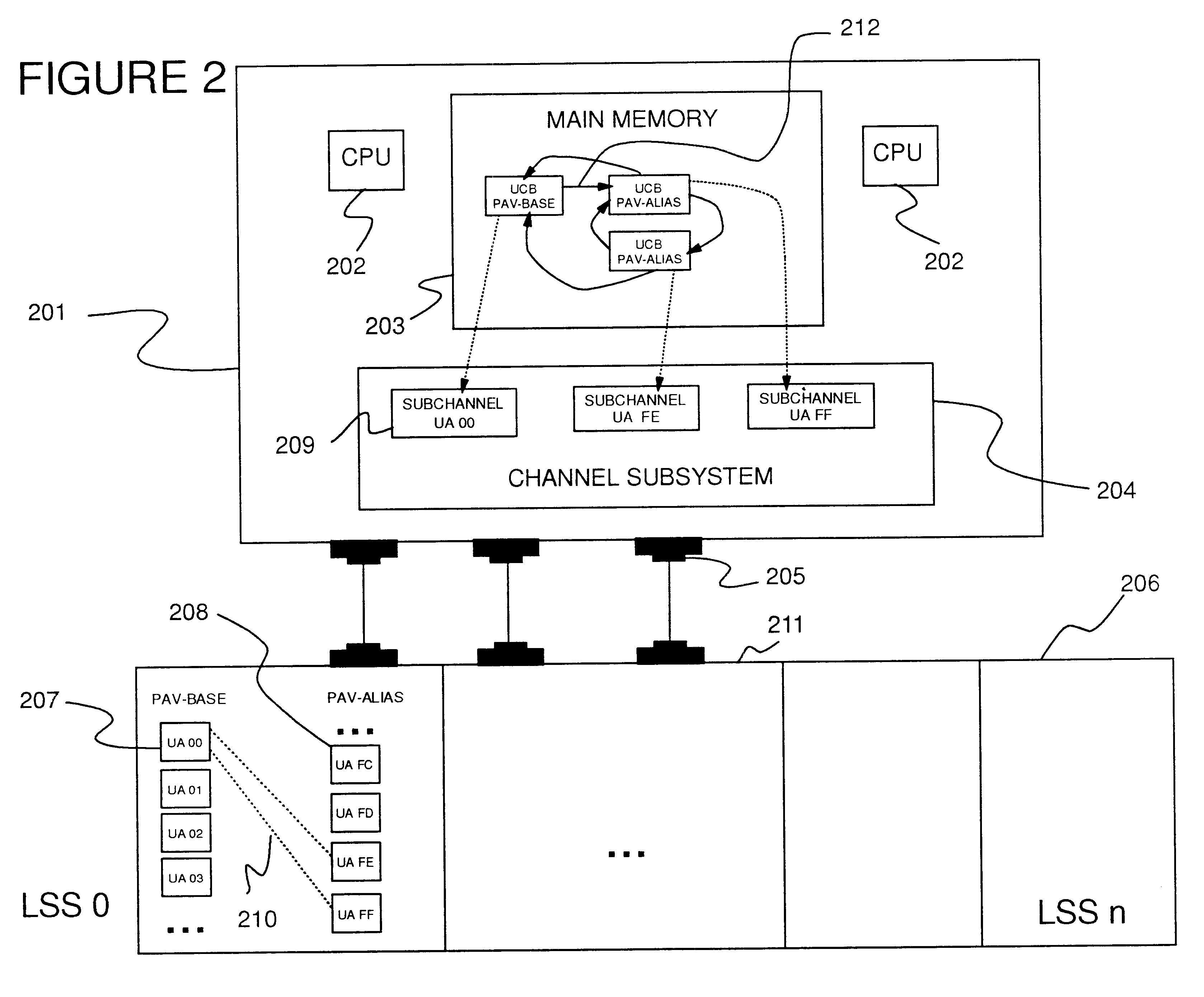Dynamic management of addresses to an input/output (I/O) device
a dynamic management and address technology, applied in the field of methods and computer program devices, can solve the problems of host system not being able to direct, service class not achieving its goal, time stamping being used to limit frequency,
- Summary
- Abstract
- Description
- Claims
- Application Information
AI Technical Summary
Benefits of technology
Problems solved by technology
Method used
Image
Examples
Embodiment Construction
: Dynamic Management of Parallel Access Volumes (PAVs)
While applicable to other I / O device types, preferred embodiments of the present invention will be illustrated for the case where the I / O device is a logical volume (LV), several of which comprise a direct access storage device (DASD) subsystem. Additionally, while the present invention is applicable in a single host environment, preferred embodiments of the present invention will be illustrated in a multi-host or sysplex environment. Further, preferred embodiments of the present invention utilize a workload manager.
A preferred embodiment of the present invention can best be understood by reference to FIG. 3, showing a shared I / O subsystem containing multiple direct access storage (DASD) devices. For the purposes of illustration, connection paths have been simplified. Host systems 310 and 320 share access to DASD subsystem 330. Resident on host systems 310 and 320 is a workload manager (WLM) and system resource manager (SRM), 311...
PUM
 Login to View More
Login to View More Abstract
Description
Claims
Application Information
 Login to View More
Login to View More - R&D
- Intellectual Property
- Life Sciences
- Materials
- Tech Scout
- Unparalleled Data Quality
- Higher Quality Content
- 60% Fewer Hallucinations
Browse by: Latest US Patents, China's latest patents, Technical Efficacy Thesaurus, Application Domain, Technology Topic, Popular Technical Reports.
© 2025 PatSnap. All rights reserved.Legal|Privacy policy|Modern Slavery Act Transparency Statement|Sitemap|About US| Contact US: help@patsnap.com



